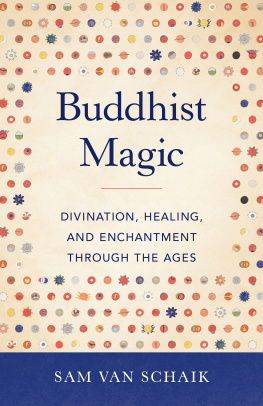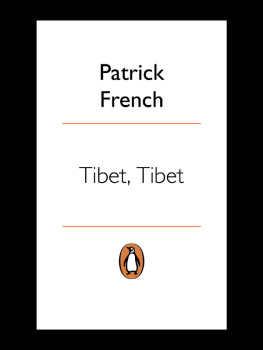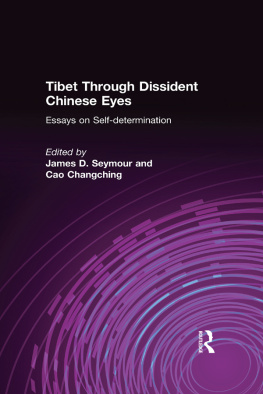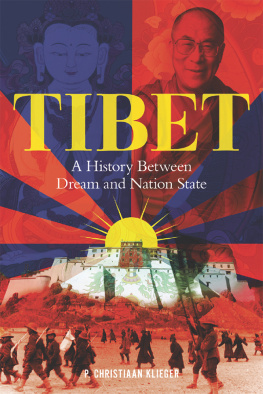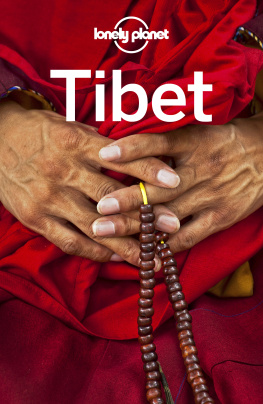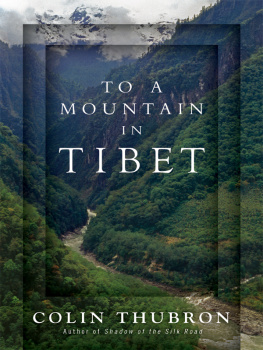Sam van Schaik - Tibet: A History
Here you can read online Sam van Schaik - Tibet: A History full text of the book (entire story) in english for free. Download pdf and epub, get meaning, cover and reviews about this ebook. year: 2011, publisher: Yale University Press, genre: History. Description of the work, (preface) as well as reviews are available. Best literature library LitArk.com created for fans of good reading and offers a wide selection of genres:
Romance novel
Science fiction
Adventure
Detective
Science
History
Home and family
Prose
Art
Politics
Computer
Non-fiction
Religion
Business
Children
Humor
Choose a favorite category and find really read worthwhile books. Enjoy immersion in the world of imagination, feel the emotions of the characters or learn something new for yourself, make an fascinating discovery.
- Book:Tibet: A History
- Author:
- Publisher:Yale University Press
- Genre:
- Year:2011
- Rating:3 / 5
- Favourites:Add to favourites
- Your mark:
- 60
- 1
- 2
- 3
- 4
- 5
Tibet: A History: summary, description and annotation
We offer to read an annotation, description, summary or preface (depends on what the author of the book "Tibet: A History" wrote himself). If you haven't found the necessary information about the book — write in the comments, we will try to find it.
Tibet: A History — read online for free the complete book (whole text) full work
Below is the text of the book, divided by pages. System saving the place of the last page read, allows you to conveniently read the book "Tibet: A History" online for free, without having to search again every time where you left off. Put a bookmark, and you can go to the page where you finished reading at any time.
Font size:
Interval:
Bookmark:
TIBET
SAM VAN SCHAIK
TIBET
A HISTORY
YALE UNIVERSITY PRESS
NEW HAVEN AND LONDON
Copyright 2011 Sam van Schaik
All rights reserved. This book may not be reproduced in whole or in part, in any form (beyond that copying permitted by Sections 107 and 108 of the U.S. Copyright Law and except by reviewers for the public press) without written permission from the publishers.
For information about this and other Yale University Press publications, please contact:
U.S. Office:
Europe Office:
Set in Minion Pro by IDSUK (DataConnection) Ltd
Printed in Great Britain by TJ International Ltd, Padstow, Cornwall
Library of Congress Cataloging-in-Publication Data
Van Schaik, Sam.
Tibet: a history/Sam van Schaik.
p. cm.
ISBN 978-0-300-15404-7 (cl:alk. paper)
1. Tibet (China)History. I. Title.
DS786.V35 2011
951'.5dc22
2010040518
A catalogue record for this book is available from the British Library.
10 9 8 7 6 5 4 3 2 1
For my daughters

(between pp. 104 and 105)
1 Statue of Songtsen Gampo, Potala Palace.
2 An ancient stone lion on top of the tomb of one of the tsenpos. Photograph Amy Heller.
3 Statues representing the three dharma kings, Palkor Chode. Photograph Amy Heller.
4 Detail from a painted scroll, attributed to Yan Liben, National Palace, Beijing.
5 Wall painting thought to depict a Tibetan tsenpo and his entourage, early ninth century, Dunhuang Cave 159.
6 Traditional Tibetan military costume, 1921. Charles Bell Collection 1112/1(64). The British Library.
7 The ruins of the Tibetan fort at Mazar Tagh. Photograph Rachel Roberts.
8 Statue of the Tibetan queen of Songtsen Gampo and her son, the crown prince Gungsong Gungtsen. Photograph Panglung Rinpoche.
9 The Old Tibetan Annals . IOL Tib J 750. The British Library.
10 Samye, entrance to the central temple, 193334. Charles Bell Collection 1112/5(447). The British Library.
11 Samye monastery, 193334. Charles Bell Collection 1112/5(447). The British Library.
12 The Lhasa treaty pillar. Photograph Kazushi Iwao.
13 Detail of the inscription in Tibetan and Chinese on the Lhasa treaty pillar. Photograph Kazushi Iwao.
14 The stupa built by Yeshe O, Toling, Western Tibet. Photograph Lionel Fournier.
15 The cave retreat of Gewa Rabsel, Dantig, Amdo. Photograph Imre Galambos.
16 Statue of Padmasambhava, in a temple in the Chumbi Valley, 193334. Charles Bell Collection 1112/5(78). The British Library.
17 Statue of Gesar, in the Gesar temple, Shigatse, 193334. Charles Bell Collection 1112/5(270). The British Library.
(between pp. 232 and 233)
18 Schematic drawing of the Potala, from the Wise maps. Add.Or.3013. The British Library.
19 Painting of the fifth Dalai Lama meeting the Manchu emperor, Potala Palace.
20 Illuminated manuscript showing Milarepa building towers for Marpa. Or.16756. The British Library.
21 Illuminated manuscript showing Milarepa in his cave, teaching a hunter. Or.16756. The British Library.
22 Two dob-dobs, or fighting monks, holding their staves, 193334. Charles Bell Collection, 1112/5(245). The British Library.
23 A geko, or monastic keeper of discipline, with ritual mace, 193334. Charles Bell Collection, 1112/5(312). The British Library.
24 Two monks in religious debate, 193334. Charles Bell Collection, 1112/5(307). The British Library.
25 A Nyingma monk holding a rosary, 193334. Charles Bell Collection, 1112/5(17). The British Library.
26 A Ngagpa holding a prayer wheel, 193334. Charles Bell Collection, 1112/5(70). The British Library.
27 A Bonpo priest with religious implements, 193334. Charles Bell Collection, 1112/5(76). The British Library.
28 A Gelug tulku with religious implements, 193334. Charles Bell Collection, 1112/1(195). The British Library.
29 A monastic official of Tashilhunpo with servant and dog, 193334. Charles Bell Collection, 1112/5(264). The British Library.
30 A Tibetan noblewoman from Gyantse wearing ceremonial headdress, 191020. W.P. Rosemeyer, 1112/3(171).
31 A government official from the Palha family in his tent at Gyantse, 193334. Charles Bell Collection, 1112/5(367). The British Library.
32 A minor lay official in ceremonial garb, 192021. Charles Bell Collection, 1112/3(76). The British Library.
33 Portrait of George Bogle (Younghusband, Francis. 1910. India and Tibet . pl.2).
34 Francis Younghusband in Tibet, 1903. MSS Eur F197/646(31). The British Library.
35 The fort (dzong) at Gyantse, 191020. Charles Bell Collection, 1112/1(365). The British Library.
36 Charles Bell seated with the thirteenth Dalai Lama and the crown prince of Sikkim, Sidkeong Tulku Namgyal, in 1910. Charles Bell Collection, 1112/1(402). The British Library.
37 Ngapo presenting a ceremonial scarf (katag) to Mao after the signing of the Seventeen-Point Agreement, 1951 (Xinhua).
38 Mao with the Dalai Lama and the Panchen Lama, 1954 (Xinhua).
Modern China and its neighbours.
The Tibetan empire in the eighth to the ninth centuries.
Tibet.
Central Tibet and Tsang.
Lhasa.
It is only possible to write a book like this because the Tibetans have maintained a vibrant tradition of historical writing, whether in anonymous works like the Old Tibetan Annals and the Testament of Ba , or religious histories by scholars like Go Lotsawa Zhonupal and Pawo Tsuglag Trengwa. I also owe much to contemporary scholars from all over the world who have written historical studies of Tibet. My debt to them is evident in the notes and bibliography. However the importance of the late E. Gene Smith is perhaps not adequately represented there. For his personal encouragement and assistance, and his staggering achievements in bringing the literature of Tibetan Buddhism to the West, he is much missed. The Tibetan Buddhist Resource Center, which he founded, is now a wonderful online library of Tibetan works.
I want to thank my parents, Paul and Barbara van Schaik, who have spent a lifetime in international aid work all over the world. Thanks to them I was able to experience in my formative years Tibetan culture at first hand among the exiles of Kathmandu, and in the remote mountains and monasteries of Bhutan. I would also like to acknowledge two Nyingma monks from Bhutan, Tsultrim and Dawa. Here in England, for guiding me to the study of Tibet, I owe everything to my teacher Lama Jampa Thaye. To him, and to Karma Thinley Rinpoche and His Holiness Sakya Trizin as well, I owe any understanding I have of the Tibetan Buddhist dharma .
The help and advice of many people has been instrumental in the publication of this book. In particular, it would not exist at all without Malcolm Gerratt of Yale University Press. It was a pleasure to work with him and the other staff of the London office of Yale University Press. I am lucky to have colleagues in the field of Tibetan Studies who are immensely generous with their time. It would take up too much space here to name them all, but I must thank Dan Martin, whose impeccable scholarship is matched with a determination to share its results. I also thank Robert Barnett, Jacob Dalton and Tsuguhito Takeuchi who offered useful advice which changed this book for the better.
I am hugely grateful for the support of Susan Whitfield, director of the International Dunhuang Project, without which I could neither have started nor finished this book. I would also like to thank Amy Heller for her generosity in providing images, and John Falconer for guiding me through the British Library's photographic collections. I am indebted to many other colleagues at the British Library, including Imre Galambos, an entertaining travel companion whose fascination with Chinese history and manuscript culture is infectious; Burkhard Quessel, whose bibliographic knowledge of Tibet never fails to amaze; and Frances Wood, always generous with her time and good advice. Finally, my wife Ananda has provided encouragement, forbearance, and a model of intellectual rigour that has informed all of my work.
Next pageFont size:
Interval:
Bookmark:
Similar books «Tibet: A History»
Look at similar books to Tibet: A History. We have selected literature similar in name and meaning in the hope of providing readers with more options to find new, interesting, not yet read works.
Discussion, reviews of the book Tibet: A History and just readers' own opinions. Leave your comments, write what you think about the work, its meaning or the main characters. Specify what exactly you liked and what you didn't like, and why you think so.


